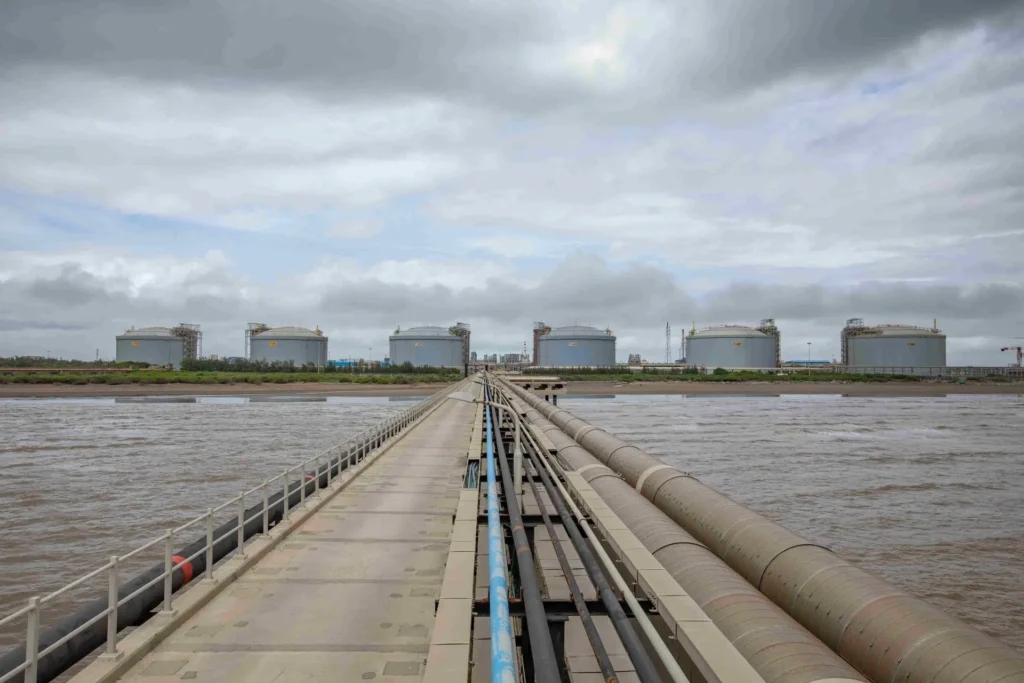LNGPrime has an update at the bottom for this month’s India LNG import statistics. I have added the Energy Mix for India, and who they are buying their oil and LNG.
Is Oil & Gas Right for Your Portfolio?
-
Coal: 452.2 Mtoe (45.88%)
-
Crude Oil: 239.1 Mtoe (29.55%)
-
Natural Gas: 49.9 Mtoe (6.17%)
-
Hydroelectricity: 31.6 Mtoe (3.91%)
-
Renewable Power (Solar, Wind, Biomass, etc.): 27.5 Mtoe (3.40%)
-
Nuclear Energy: 8.8 Mtoe (1.09%)
-
Traditional Biomass: Excluded from the above but significant in rural areas.
-
Coal dominates due to its use in electricity generation (over 70% of power supply) and industries like steel and cement.
-
Crude Oil is critical for transportation and industrial sectors, with India importing 88.2% of its crude oil needs in 2024-25.
-
Natural Gas accounts for ~6% of the energy mix, with a government target to increase it to 15% by 2030 to reduce coal dependency.
-
Renewables are growing rapidly, driven by solar and wind, with India aiming for 500 GW of non-fossil capacity by 2030.
-
Energy Import Dependency: 40.9% of primary energy was imported in 2021-22, including 82.8% of crude oil and 45.3% of natural gas.
-
Russia: 40% of imports in 2024, the top supplier since the Ukraine war due to discounted prices.
-
Middle East (44% of imports in 2023, down from 60% in 2022):
-
Iraq: Second-largest supplier.
-
Saudi Arabia
-
United Arab Emirates (UAE)
-
Kuwait
-
Qatar
-
-
United States: Imports rose to 357,000 barrels per day in February 2025 (from 221,000 bpd in 2024), driven by shale oil and strategic trade ties.
-
Africa:
-
Nigeria
-
Angola
-
Algeria
-
-
Southeast Asia:
-
Malaysia
-
Indonesia
-
Vietnam
-
-
Others: Brazil, Argentina, Suriname, Canada, Guyana, and Commonwealth of Independent States (CIS) countries like Azerbaijan and Kazakhstan.
-
Russia’s share surged post-2022 due to Western sanctions, making India a key buyer of discounted Russian crude.
-
Middle East imports declined by 28% in 2023 due to diversification efforts.
-
U.S. imports are increasing to diversify sources and reduce reliance on volatile markets.
-
Qatar: 48.6% (primary supplier due to proximity and long-term contracts).
-
UAE: 18.5%
-
United States: 11.0% (5.12 million tonnes in Jan-Nov 2024, 20.2% of total LNG imports).
-
Oman: 5.6%
-
Australia: 2.8%
-
France: 2.3%
-
Angola: 2.3%
-
Nigeria: 1.9%
-
Others: 7.0% (includes Russia, with talks for long-term deals via Novatek and GAIL).
-
U.S. LNG imports are growing, with 960,000 tons in June 2024, driven by competitive pricing and trade agreements. India may scrap a 2.5% import tax on U.S. LNG to boost purchases.
-
Qatar remains dominant, but India is diversifying with long-term deals, e.g., with ADNOC (UAE, 1.2 million tonnes/year from 2026) and TotalEnergies (France, 0.8 million tonnes/year).
-
LNG Demand: Expected to double to 65 bcm by 2030, driven by industrial and power sectors.
-
Challenges: Pipeline infrastructure delays limit LNG distribution to inland demand centers.
Update from LNGPrime.com
The country imported 2.97 billion cubic meters, or about 2.2 million metric tonnes of LNG in May, via long-term contracts and spot purchases.
May LNG imports were similar to those of the previous month, when they increased year-over-year.
India imported 5.95 bcm of LNG during April-May, down 1 percent compared to the previous year.
PPAC’s data previously showed that LNG imports rose in January and February compared to the previous year, while March imports were slightly lower.
From April 2024 to March 2025, India took 36.99 bcm of LNG, or about 27.7 million metric tonnes, up by 15.4 percent compared to the same period in the year before, PPAC’s data previously showed.
India paid $1.2 billion for May LNG imports, down from $1.4 billion in May 2024.
Moreover, India’s natural gas production reached about 2.98 bcm in May, a drop of 4 percent from the corresponding month of the previous year.
India now imports LNG via eight facilities with a combined capacity of about 52.7 million tonnes per year.
These include Petronet LNG’s Dahej and Kochi terminals, Shell’s Hazira terminal, and the Dabhol LNG, Ennore LNG, Mundra LNG, and Dhamra LNG terminals.
The newest LNG import terminal is HPCL’s 5 mtpa Chhara LNG import terminal in India’s Gujarat, which launched commercial operations in February.
PPAC said that during April this year, the 17.5 mtpa Dahej terminal operated at 88.4 percent capacity, while the 5.2 mtpa Hazira terminal operated at 16.2 percent capacity.
The 5 mtpa Dhamra LNG terminal operated at 36.5 percent capacity, the 5 mtpa Dabhol LNG terminal operated at 43.9 percent capacity, the 5 mtpa Kochi LNG terminal operated at 17.7 percent capacity, the 5 mtpa Ennore LNG terminal operated at 24.7 percent capacity, the 5 mtpa Mundra LNG terminal operated at 18.2 percent capacity, and the Chhara LNG terminal operated at 3.8 percent capacity.
India’s largest LNG importer, Petronet LNG, has again pushed back the launch of an additional five mtpa capacity at its Dahej LNG terminal in western Gujarat state.
Last month, the company’s executive said that “within the next three to four months, we expect this to be ready for commissioning.”

